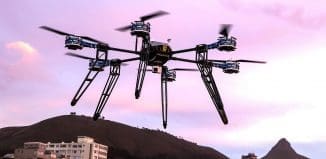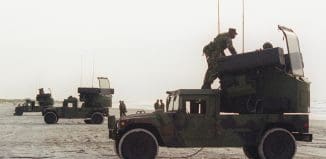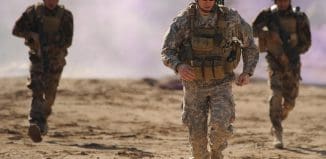The main characteristics of ISIS and its military campaign
This post is also available in:  עברית (Hebrew)
עברית (Hebrew)
Written by The Meir Amit Intelligence and Terrorism Information Center

1) Military capabilities: ISIS has an estimated 25,000 operatives in Syria and Iraq, and their number is growing. In ITIC assessment, as many as 12,000 are operatives from Syria and Iraq, and more than 13,000 are foreign fighters. Most of the foreign fighters come from the Arab-Muslim world. An estimated 3,000 come from Western countries (about half from France and Britain). They usually arrive in Syria via Turkey, are given short military training by ISIS and engage in fighting. For the most part they return to their countries of origin. During their stay in Syria they gain military capabilities and receive Salafist-jihadi indoctrination, and pose a security threat to their countries of origin and to a certain extent to Israel (as illustrated by the attack on the Jewish museum in Brussels, which was carried out by a French national who fought in the ranks of ISIS).
2) Possession of weapons: ISIS has a large arsenal of weapons, most of them plundered from the Syrian and Iraqi armies. They include light arms, various types of rockets and mortars, and anti-tank and anti-aircraft missiles. In addition ISIS possesses heavy arms and the advanced technologies usually found only in regular national armies: artillery, tanks and armored vehicles, shoulder-fired anti-aircraft missiles and drones. It has used mustard gas a number of times in Syria and Iraq and may have other types of chemical weapons, such as chlorine gas. Chemical weapons were used to attack the Kurdish militias in Ayn al-Arab (Qobanê) in northern Syria and against the Iraqi security forces. ISIS also has at least one Scud missile (technically flawed, in ITIC assessment) and a number of planes (operating from an ISIS-controlled airport).
3) Areas of control: Today ISIS controls an estimated third of the territory of Iraq and between a quarter and a third of Syria, from the outskirts of Baghdad to the outskirts of Aleppo. The vast area, according to various estimates, is home to between five and six million people. Several important cities are in the ISIS-controlled region, among them Mosul (the second largest city in Iraq), Fallujah (symbol of the struggle against the United States) and Al-Raqqah (the ISIS “capital city” in northern Syria). It is noteworthy that a relatively small number of ISIS operatives control a broad swath of territory, which is one of ISIS’ weak points. To overcome it, ISIS relies on local supporters and allies, and is making an effort to enlist operatives from Syria, Iraq and abroad.
4) Establishment of alternative administration networks: In the areas under its control ISIS instituted alternative administrations to replace those of Syria and Iraq which collapsed. They include educational, judicial, policing and law enforcement networks. ISIS uses them to provide vital services and at the same time to enforce its Salafist-jihadi ideology on the local population. To that end it uses brutal measures against its opponents and the minorities living under its control (including mass executions). Nevertheless, so far the local populations seem to have come to terms with ISIS control and sometimes even support it. They do so especially in view of its ability to provide basic services, restore daily life to the status quo ante, and fill the administrative void that was created.
5) High financial capabilities: In Syria and Iraq ISIS took control of the state infrastructure, including most of the oil fields in eastern Syria and several oil fields in Iraq. The export of petroleum products is the main source of ISIS’ income and its profits are estimated at several million dollars a day. However, profits fell in the wake of the aerial attacks carried out by the United States and its allies on its oil infrastructure. Other sources of ISIS income are various types of criminal activity (extortion, collecting ransom for abductees, trading in antiquities), collecting donations and imposing local taxes. Thus it is an exceptional example of a terrorist organization which managed to acquire semi-national financial capabilities to fund its military infrastructure and allow it to establish an alternative governmental system.
Military Measures Taken by ISIS in Syria and Iraq (Updated to mid-November 2014) –
In June 2014 ISIS began a military campaign in Iraq whose objective, in ITIC assessment, was to take over most of the territory of northern and western Iraq to launch an attack on Baghdad. At the same time it waged campaigns for the control of various districts in eastern and northern Syria and to weaken its rivals and enemies (the Syrian regime, the Al-Nusra Front, the Kurdish militias and the other rebel organizations). Its military achievements so far have enabled it to create a supranational territorial continuum of the vast area under its control, where it is actively working to establish the rule of its self-declared Islamic Caliphate.
To date ISIS’ military campaign in Iraq has had three stages:
1) Dramatic success (June – August 2014): ISIS captured the oil city of Mosul from the Iraqi army. The Iraqi army, in whose establishment and training the United States invested enormous resources for years, collapsed and fled. An ISIS force also captured the Mosul Dam with its hydroelectric plant (north of the city on the Tigris), driving out the Kurdish Peshmerga force defending it. (An ISIS force also tried to capture the Haditha Dam on the Euphrates, the second largest dam in the country, but was met with resistance from the Iraqi army stationed there.) ISIS also took control of the city of Tikrit, Saddam Hussein’s birthplace and a former stronghold of the Iraqi Ba’ath party.
2) Containment and halt (second half of August – September 2014): During the second half of August and September 2014 (when the United States began its pinpointed aerial attacks) ISIS’ advance was halted. The Kurdish Peshmerga forces, the Iraqi army and the Shi’ite militias retook the Mosul Dam. The Iraqi army drove ISIS forces from the large Haditha Dam and the oil city of Baiji (an important logistic passage besieged by ISIS). ISIS enemies saved the lives of minority groups considered “infidels” by ISIS and targeted for harassment, attack and slaughter: Yazidi refugees were rescued from Mt. Sinjar (in northern Iraq) and the siege of the predominantly Shi’ite-Turkmen town of Amerli (south of Kirkuk) was lifted.
Register to iHLS Israel Homeland Security
3) Establishment of control over the Al-Anbar province, possibly a step in a campaign against Baghdad (end of September – mid-November 2014): ISIS forces cleared pockets of resistance in the Al-Anbar province (Iraq’s largest Sunni district) and advanced towards the capital city of Baghdad. At the same time, ISIS carried out a series of suicide bombing attacks in Baghdad, mainly in Shi’ite neighborhoods. The news agencies reported ISIS forces located several dozen miles from the city and fighting in the city of Abu Ghraib, west of Baghdad. However, the Iraqi army, the Shi’ite militias and the Kurdish forces had several military achievements, the most prominent of which was relieving the siege of Baiji.
So far ISIS has not yet taken full control of the Sunni Al-Anbar province. In ITIC assessment, in the future ISIS is planning to take over Baghdad, but apparently the campaign will be far more difficult than the easy conquest of Mosul, because its operatives are liable to encounter fierce resistance from the Shi’ite militias and the Iraqi army, which will have Iranian support and aerial cover from the American-led coalition. It is also likely that ISIS’ rivals will cooperate against it. In can be expected that ISIS will attempt to overcome resistance by besieging Baghdad and disrupting life in the city (by firing rockets and mortar shells, and detonating IEDs and car bombs). During October and to mid-November 2014 hundreds of civilians were killed in Baghdad, most of them Shi’ite, in suicide bombings and car bomb attacks, for at least some of which ISIS was responsible.
While launching military campaigns, ISIS has firmly established its grip on extensive areas of eastern and northern Syria. It has expelled its rivals and enemies (among them other rebel organizations, the Al-Nusra Front and the Syrian army), and attempted to gain control of new key areas (as of this writing the campaign for the Kurdish region of Qobanê near the Turkish border has not yet ended). It established its control over Al-Raqqah, turning it into its “capital city” in Syria, and solidified its control over the local population. Its accomplishments are funded by the enormous sums of money pouring in from its control of the country’s infrastructure, especially the sale of petroleum products from the fields in eastern Syria (although its profits have decreased since the Americans and their allies began aerial attacks).
The Significance and Main Implications of ISIS’ Achievements in Syria and Iraq:
The foothold gained by ISIS in Syria and Iraq has far-reaching local, regional and international significance and implications:
1) Iraq: ISIS conquests in the summer of 2014 accelerated the disintegration of Iraq into religious and ethnic components. It can be said that Iraq no longer functions as a nation state. Three entities arose: a Sunni district controlled by ISIS in western and northern Iraq; an autonomous Kurdish region in the north and a Shi’ite region in the center and south affiliated with the Shi’ite regime in Baghdad. The borders between them are blurred and unstable, and ISIS, which is gaining strength, can be expected to continue its efforts to enlarge the areas under its control at the expense of the other entities, which are currently on the defensive.
2) Syria: In Syria as well ISIS’ increase in strength contributed to deepening the country’s de facto division. ISIS secured its control over the northern and eastern parts of the country and weakened its various rivals (the Syrian regime, the Al-Nusra Front and the other rebel organizations). However, ISIS has not been able to break the Syrian regime’s hold on Damascus and other core areas in the north and west, or of the rebel organizations on the southern part of the country (including most of the area of the Golan Heights along the border with Israel). The strengthening of ISIS and the American-led campaign against it increased the existing complexity of the Syrian civil war and made the situation more volatile, making it more difficult to resolve the Syrian crisis in the foreseeable future.
3) The establishment of the global jihad in the Middle East: ISIS’ successes in Syria and Iraq turned them into a new focus for the global jihad, inheriting the place of Afghanistan and Pakistan. As opposed to the era of Osama bin Laden, today there are two principal hostile, rival jihadi organizations: one, ISIS, affiliated with the global jihad but at odds with the Al-Qaeda leadership of Ayman al-Zawahiri; and the other, the Al-Nusra Front, a branch of Al-Qaeda in Syria. Between the two are global jihad networks within the Middle East and beyond. Some of the jihadi networks in the Middle East, mainly the Egyptian-based Ansar Bayt al-Maqdis, have already taken a stand and sworn allegiance to ISIS, which is gaining power against the Al-Qaeda leadership. In addition, in the future ISIS’ potential for subversion and terrorism is liable to destabilize countries in the Middle East and to export jihadi terrorism to Israel and the West.
4) Regional Middle East significance: The foothold gained by ISIS and the global jihad in Syria and Iraq reflects and may aggravate the regional upheaval in the Middle East: the flashpoints include the tensions, schisms and hostility among the various ethnic, religious and tribal groups, especially between the Sunnis and Shi’ites; the political weakness of the nation states created and forced upon the region by the French and British after the First World War; the loss by the key states in the Middle East of their ability to govern; and the establishment of alternative ideologies and governance in the places where nation states collapsed. The establishment of the Salafist-jihadi organizations in Syria and Iraq are manifestations of the power of radical Islamic ideology to attract followers and present itself as a magical solution for the ongoing distress and basic ills that have plagued the nation states since their inception.
Thus, additional instability and volatility were injected into the already unstable situation in the Middle East by the establishment of ISIS and the global jihad organizations’ power base in Syria and Iraq. They are liable not only to accelerate the disintegration of Syria and Iraq but to filter into the entire region. In the foreseeable future ISIS can be expected to continue its military occupation of Syria and Iraq, establish its control and oppose the campaign the United States is waging against it. However, in the long run, as it establishes itself more firmly in Syria and Iraq, its influence may gradually spread to other Arab states; its growing cooperation with the Ansar Bayt al-Maqdis is proof thereof. Veterans of the fighting in Syria who return to their countries of origin in the Middle East are liable to become “carriers” of terrorism and subversion, whether at ISIS instigation or on their own initiative, thereby contributing to political instability in their own countries (as has already happened in Darnah in eastern Libya, taken over by a jihadi network which expressed its support for ISIS).





























